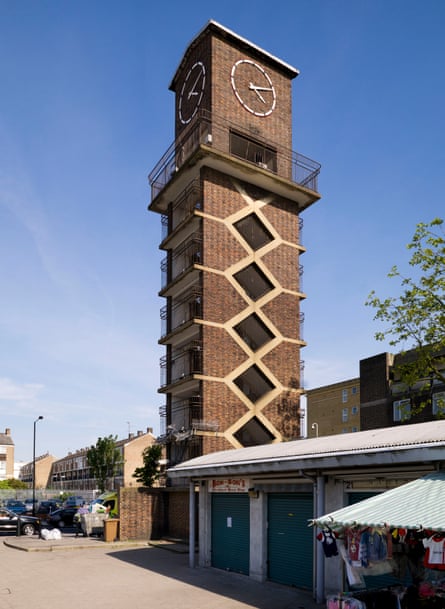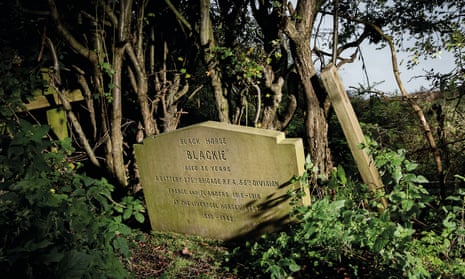A memorial in Liverpool to a war horse which returned safely from the front, and the seaside gardens where entrepreneur Billy Butlin first set up a humble hoopla stall, then the first dodgems in England and finally the first of his famous holiday camps, are among the more unusual buildings and structures which earned the honour of being listed in 2017.
The sites were among more than 1,000 new entries on the Historic England register. The public body’s chief executive, Duncan Wilson, said almost everyone in England – 99% of the population – lived within a mile of a listed site, some even world famous. “These sites are irreplaceable and showcase the wonderfully distinct and diverse character of England and its people across thousands of years,” he said.
Others included a jolly Festival of Britain-style clock tower in the first pedestrianised shopping centre in England, and acoustic mirrors carved into the cliff face at Dover to capture the sound of approaching warplanes.

The horse memorial is in Halewood in Merseyside, and marks the grave of Blackie, one of the very few, out of hundreds of thousands of British army first world war horses and mules, which came back safely from the western front and died of old age.
Blackie survived some of the most infamous battles, including Arras, the Somme, and Ypres where he suffered severe shrapnel wounds. His master was the war poet Leonard Comer Wall, who was killed in action in June 1917, aged 21, and whose mother bought Blackie when the horse returned to England. Blackie served at the Territorial Army riding school and led parades through the streets of Liverpool, before being retired to a horses’ rest home in Halewood, where he died aged 37 in 1942. He was buried with his master’s war medals.
The clock tower was designed by Frederick Gibberd for Chrisp Street market in Poplar, in the east end of London, the heart of a new housing estate, and became the centrepiece of an architectural exhibition in 1951 as part of the Festival of Britain. The complex included the Festival Inn, the first permanent postwar pub, also designed by Gibberd and also newly listed. Its interior, with a panelled dartboard area and a Festival of Britain mirror over the fireplace, was created by the brewery’s then designer, R W Stoddard.

By far the oldest of the newly listed sites is a neolithic trackway near Doncaster in South Yorkshire, built 4,500 years ago across boggy land and shallow water – possibly for ritual use, carefully designed to appear even longer and more impressive as it narrows from three to one metre. It was found by accident during peat cutting in the 1990s, and survives as well preserved buried waterlogged timbers.
In contrast Leaf Hall was a 19th-century attempt at social engineering, built for local fishermen in Eastbourne, East Sussex, in the 1860s by William Laidler Leaf, a London philanthropist and leading member of the temperance movement. Although there was no question of including a bar, it did have a coffee room, lending library and reading room, smoking room, a lecture room with an orchestra gallery, and a skittle yard, all dedicated to promoting “the social, moral and spiritual welfare of the working classes of Eastbourne”.
The seaside gardens, among 13 parks and gardens newly added, are along the breezy promenade at Skegness, and were first laid out as a Lincolnshire fishing village was transformed into a holiday resort in the 19th century – celebrated by the Jolly Fisherman image created in 1908. In the 1920s the town engineer and architect Rowland Jenkins poured in new features including a boating lake, bowling greens, ruined castles, a ballroom, a Swiss garden and acres of rose garden.
Billy Butlin first brought his hoopla stall to Skegness in the 1920s, and did so well he created a funfair featuring the first dodgems in England, with cars imported from the US. In 1936 he opened his first Butlin’s holiday camp – with a day and night entertainment programme said to have been inspired by miserable memories of being locked out all day by a landlady in his childhood.
